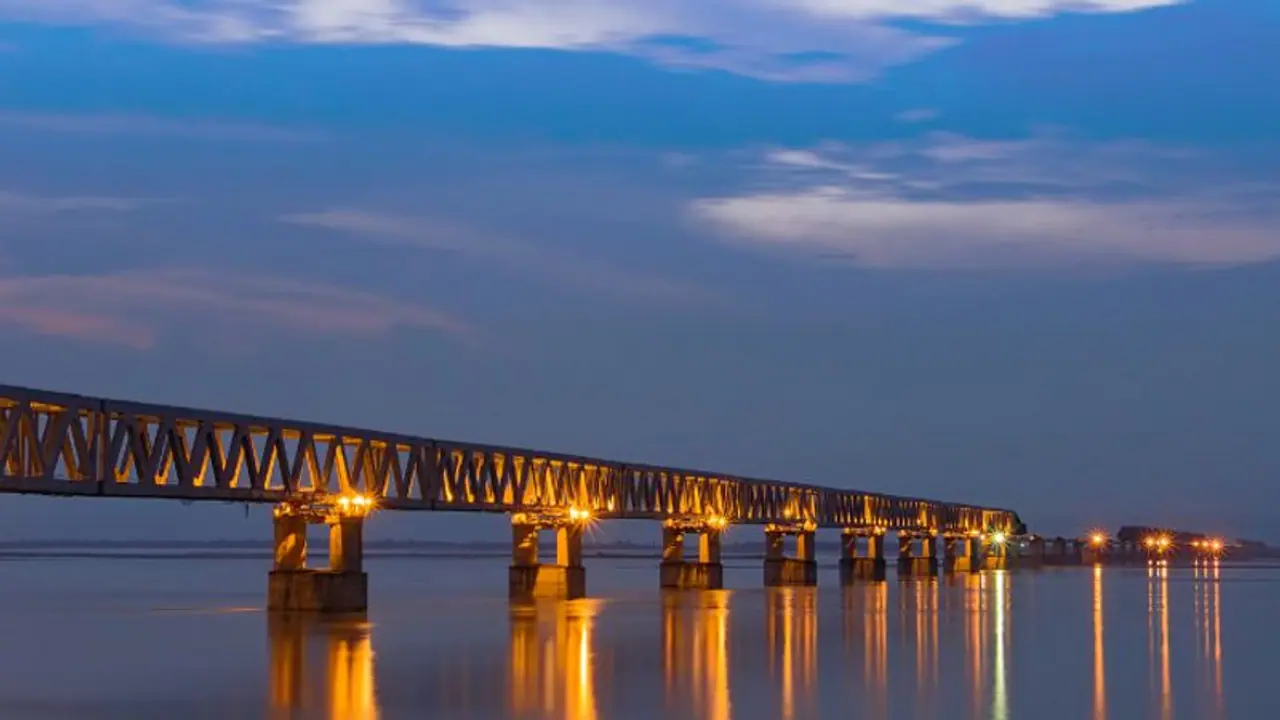This is the second major bridge to be completed in Upper Assam after the completion of the Dhola-Sadiya bridge on the Lohit river last year
New Delhi: In a major boost to defence logistics along the border with China, India's longest road and railway bridge - Bogibeel Bridge - connecting Dibrugarh in Assam to Pasighat in Arunachal Pradesh became operational on Monday.
The bridge is India's longest road-cum-rail bridge measuring 4.94 km. This opens the doors to enhanced connectivity in the North-East, minister for railways Piyush Goyal tweeted today.
Some interesting points about the new corridor
1. The project was approved in 1996, construction of the bridge was initiated by the first BJP-led NDA government in 2002. The Congress-led UPA government had declared it a national project in 2007.
2. The bridge is the second longest in Asia and has three-lane roads on top and double line rail below.
3. The bridge is 32 metres above the water level of river Brahmaputra and is fashioned on a bridge that links Sweden and Denmark.
4. Bogibeel is part of infrastructure projects planned by India to improve logistics along the border in Arunachal Pradesh.
5. The other projects include construction of a trans-Arunachal highway on the north bank of the Brahmaputra, and new road and rail links over the mighty river and its major tributaries such as the Dibang, Lohit, Subansiri, and Kameng.
6. As of now, the rail and road link to Arunachal is through three Assam bridges - Jogighopa in Bongaigaon district, Saraighat near Guwahati, and Kolia-Bhomora between Sonitpur and Nagaon.
7. The other route is by ferry, but it is not suitable for heavy cargo and due to monsoons for six months between May-October, ferry services often remain disrupted.
8. For the government, the bridge is both a symbol of development in the northeast as well as part of a strategic move solving logistical issues for the armed forces stationed at the China border to get supplies from Tezpur.
